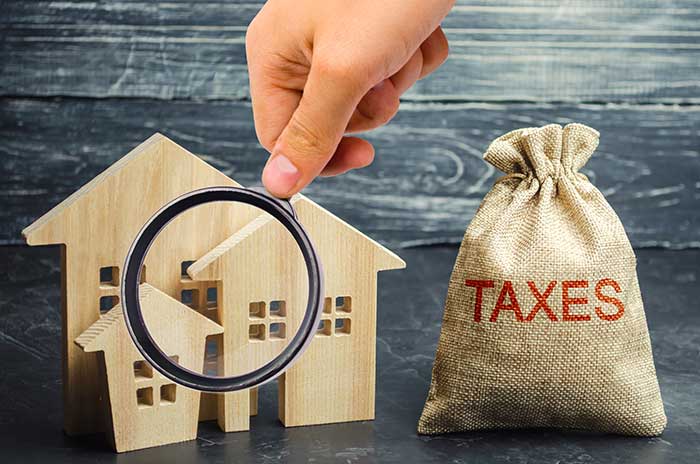It has been a difficult year for everyone, including Long Island residents. Unfortunately, it has also been a difficult year financially for county and local municipalities, which are looking to close their budget gaps with yet another property tax increase for Long Islanders.
According to a Newsday article, some Suffolk and Nassau County residents saw a tax increase of up to 65% this year, while others managed up to a 35% reduction in their tax bills. Wouldn’t you rather be in the latter category? Read on to find out how you can join the thousands of residents who are grieving – and ultimately lowering their property tax bills on Long Island.
Step One: Assess Your Assessment
Your Long Island property’s tax value is determined by a variety of factors. One is the school district you are in. There is not much you can do to change this part. Another factor that you can change, however, is the assessed market value of your property.
Your property’s assessed value is the estimated price at which your property would sell for under normal circumstances – aka its Market Value. The Market Value of your home is usually determined by comparing your home to similar homes in your neighborhood. By averaging the prices at which similar homes have recently sold, an assessor comes up with the market value of your home.
Then, your local municipality uses your assessed property value to calculate your tax bill, by multiplying it by the local tax rate. This means your tax bill can change each year as local government budgets, tax rates, and your property assessment change.
You may never see the tax assessor. To reassess your home, the assessor will most likely make a street visit, and you most likely won’t even know that they’re there. However, if a home inspection is requested, while you are not required to let the assessor in your home, your cooperation helps assure that your assessment will be fair and based on accurate information. Otherwise, the assessor will have to estimate how many bedrooms, bathrooms, etc., there are in your home. Later, if you file a tax grievance, assessment officials will need the exact information the home inspection would have provided in order to rule on your request for a lower assessment.
For safety reasons, you should never allow anyone into your home without proper identification issued by the authorized town or city. If the timing of the visit is inconvenient you can request the assessor return at a later date.
While you cannot alter the tax rate, you can challenge the validity of your property’s assessment, ultimately lowering your tax bill. Here’s how.
Step Two: File a Grievance
If you want to lower your tax bill, you’ll need to file a Property Tax Grievance with your local tax office. What you’re essentially doing is challenging your property assessment as incorrect or too high.
Filing a Property Tax Grievance means that your property’s assessed value will be reviewed by an Assessor to see if a reduction is warranted. Don’t worry though – it’s actually illegal for the tax office to raise your property’s assessed value in a reassessment, so your taxes can never go up because you filed a property tax grievance.
The Details
Suffolk County Residents – Filing a Property Tax Grievance takes about a year, end-to-end, however, the results of your grievance will be retroactive from the date you filed it. So if you file for 2021, and get the decision in 2022, you’ll retroactively be refunded on the difference in your tax bill from 2021. You cannot, however, grieve tax bills from years past, unfortunately. Once a tax year’s deadline passes, you’ll have to wait until the following year to file your property tax grievance.
Nassau County Residents – Filing a Property Tax Grievance takes about a year, end-to-end, and you always file for the following year’s tax bill. So, if you file in 2021, and get the decision in 2022, you’ll see the difference in your 2022-23 tax bill. There are typically no refunds necessary since your tax statement is adjusted in advance. You cannot, however, grieve tax bills from years past, unfortunately. Once a tax year’s deadline passes, you’ll have to wait until the following year to file your property tax grievance.
Important Tax Deadline Dates to Remember
Nassau County’s filing deadline – Normally March 1st– Extended to April 30th, 2021
This year’s Suffolk County filing deadline – May 18, 2021
Getting Tax Grievance Help
While you are allowed to file a tax grievance yourself, most homeowners that try to don’t get the reduction they deserve. They’re either underprepared or don’t have the time, experience, or documentation available to best negotiate.
For example, if your tax bill’s reduction doesn’t seem adequate, you can appeal your reassessment via an impartial hearing. If you get to that point, you’ll definitely want to have an experienced tax lawyer on your side to properly plead your case and get you into the group of Long Island homeowners who have successfully lowered their property tax bills by up to 35% during the COVID Crisis.
If you’re ready to lower your Long Island property tax bill, give a call to Heller & Consultants Tax Grievance in Nassau County: (516) 342-4849 or in Suffolk County: (631) 302-1940 to start your Property Tax Grievance before this year’s deadline passes you by.

